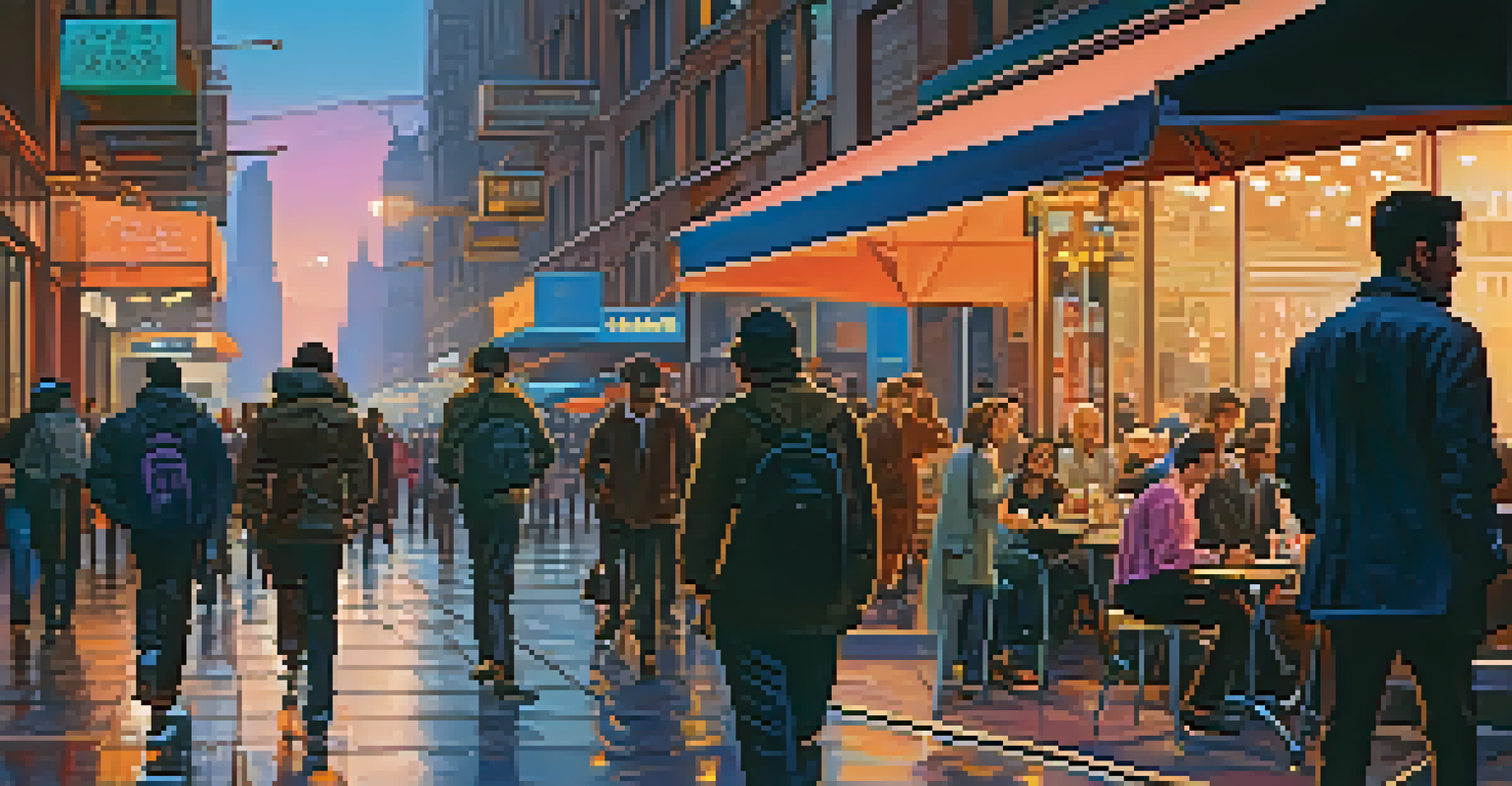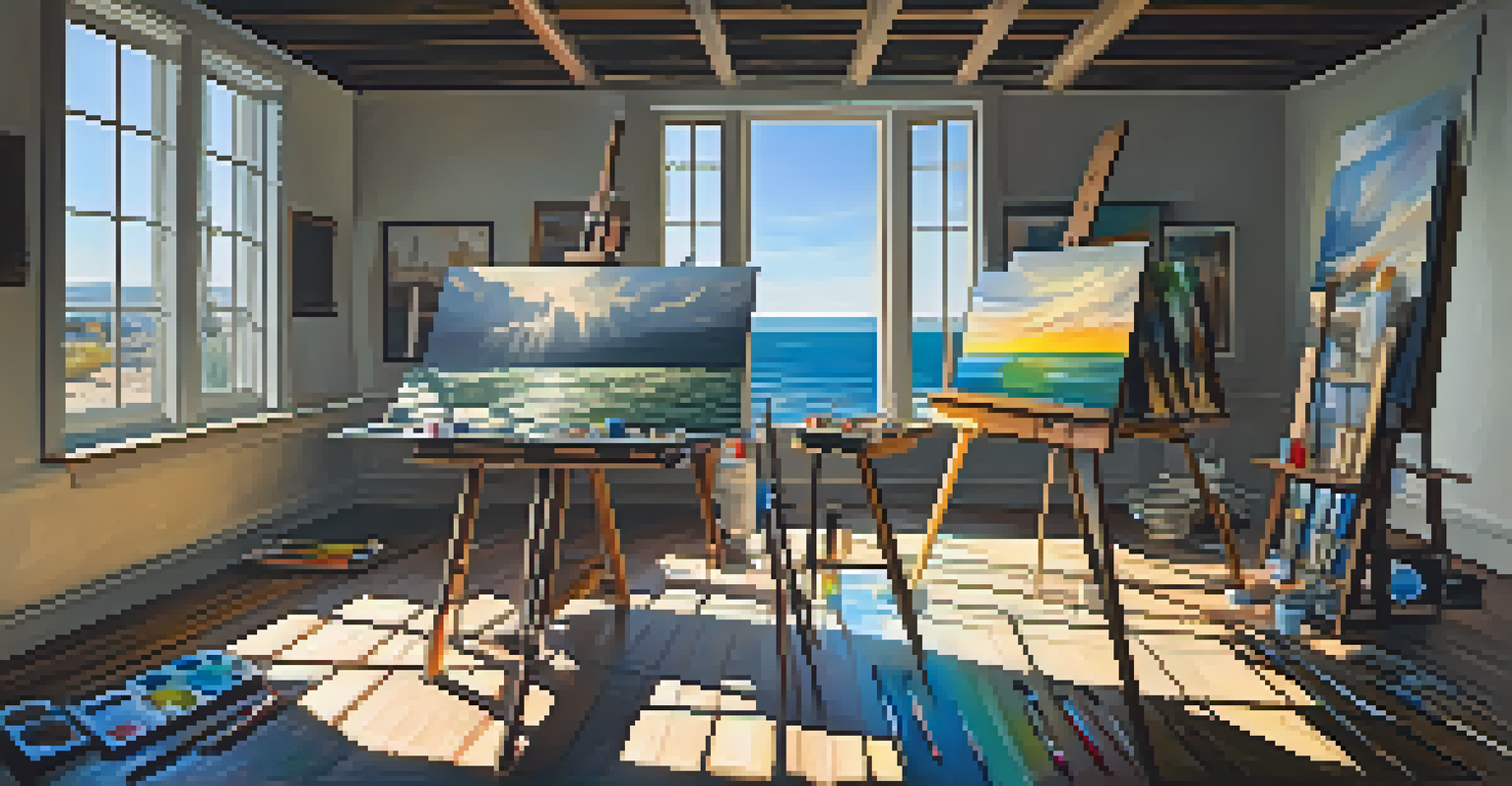Chronotopes in Literature and Art: Time and Space Intertwined

Understanding Chronotopes: A Definition
Chronotopes are a fascinating concept in literature and art that intertwine time and space. Coined by the Russian literary theorist Mikhail Bakhtin, the term helps us understand how different environments influence storytelling. Essentially, a chronotope captures how the spatial and temporal dimensions affect the narrative's meaning and character development.
Time is a created thing. To say 'I don't have time,' is like saying, 'I don't want to.'
For example, think about a story set in a bustling city versus a quiet countryside. The unique characteristics of each setting not only shape the plot but also the characters' experiences and interactions. In this way, chronotopes serve as a framework through which readers and viewers can engage with the narrative more deeply.
By examining chronotopes, we gain insights into the cultural and historical contexts of different works. This exploration allows us to appreciate the intricate ways authors and artists manipulate time and space to create compelling stories.
The Role of Time in Chronotopes
Time is a critical element within chronotopes, as it dictates the pacing and progression of a narrative. In literature, time can be linear, where events unfold in chronological order, or it can be non-linear, with flashbacks and foreshadowing adding layers to the story. This manipulation of time shapes the reader's understanding and emotional response to the narrative.

For instance, consider the novel 'The Sound and the Fury' by William Faulkner. Its unconventional use of time creates a complex narrative structure that reflects the characters' internal struggles and perceptions. The temporal disorientation mirrors the chaos in their lives, making the reading experience both challenging and rewarding.
Chronotopes Unite Time and Space
Chronotopes blend temporal and spatial dimensions, shaping narratives and character development in literature and art.
In art, time can also be depicted through the choice of moments captured in a painting or photograph. An artwork that freezes a fleeting moment in time can evoke strong emotions, allowing viewers to connect with the depicted scene on a personal level.
The Significance of Space in Chronotopes
Space adds another layer of complexity to chronotopes, influencing how stories are told and perceived. The setting of a narrative can establish mood, reflect themes, and provide context for characters' actions and motivations. Whether it's a gothic castle or a modern urban landscape, the chosen space molds the storytelling experience.
Space is the breath of art.
Take, for example, the setting of George Orwell's '1984.' The oppressive, dystopian environment serves as a backdrop for the characters' struggles against totalitarian control. The bleakness of the space reinforces the novel's themes of surveillance and loss of individuality.
In visual art, space can be manipulated through perspective and composition to create depth and movement. Artists can draw viewers into the scene, encouraging them to explore the relationships between the subjects and their environment.
Chronotopes and Character Development
Chronotopes play a vital role in shaping character development within narratives. The interplay of time and space can reveal a character's growth, conflicts, and relationships. As characters navigate their environments across different temporal contexts, they often undergo significant transformations.
Consider the coming-of-age novel 'To Kill a Mockingbird' by Harper Lee. The spatial setting of the small Southern town and the time period of the Great Depression profoundly affect the protagonist, Scout Finch, and her moral development. Through her experiences, readers witness the evolution of her understanding of justice and empathy.
Cultural Contexts Shape Chronotopes
Different cultures influence the portrayal of time and space in storytelling, enriching narratives with layers of meaning.
In visual storytelling, character development can also be reflected through their interactions with space. An artist might depict a character surrounded by expansive landscapes to symbolize freedom, or in cramped settings to illustrate confinement and struggle.
Cultural Contexts of Chronotopes
Chronotopes are deeply rooted in cultural contexts, often reflecting the values, beliefs, and historical moments of their time. Different cultures may emphasize various aspects of time and space, influencing how stories are told and received. This cultural lens can enrich the narrative and provide layers of meaning.
For instance, in many Indigenous cultures, time is viewed as cyclical rather than linear, which shapes their storytelling traditions. This perspective can be seen in oral histories that weave together past, present, and future, emphasizing the interconnectedness of all things.
In art, cultural contexts can also be highlighted through the choice of colors, symbols, and spatial arrangements. These elements work together to convey messages or themes that resonate with specific audiences, making the artwork more impactful.
Chronotopes in Contemporary Literature
In contemporary literature, authors continue to explore and innovate with the concept of chronotopes. Many modern narratives experiment with time and space, often blending genres and styles to create multifaceted stories. This evolution reflects the complexities of contemporary life and the diverse experiences of individuals.
A great example is the novel 'Cloud Atlas' by David Mitchell, which spans multiple time periods and locations, intertwining the lives of characters across centuries. Each chronotope adds depth to the narrative, showcasing how actions can reverberate through time and space.
Innovative Chronotopes in Modern Works
Contemporary literature and art experiment with chronotopes, merging genres and styles to reflect the complexities of modern life.
Such innovative approaches invite readers to engage critically with the text, prompting them to consider the connections between different chronotopes. This engagement enhances the overall reading experience, making it more interactive and thought-provoking.
The Future of Chronotopes in Art and Literature
As we move forward, the concept of chronotopes will likely continue to evolve in both literature and art. With the rise of digital media and new storytelling formats, creators are exploring fresh ways to manipulate time and space. This evolution opens up exciting possibilities for how narratives can be constructed and experienced.
For instance, virtual reality (VR) offers unique opportunities to immerse audiences in dynamic chronotopes, allowing them to navigate spaces and timelines in an interactive way. This technology could redefine our understanding of storytelling by placing viewers at the center of the narrative.

Ultimately, as artists and writers experiment with these new mediums, the rich interplay of time and space will remain a fundamental aspect of storytelling. The exploration of chronotopes will continue to reveal insights into human experiences, inviting us to reflect on our shared journeys through time and space.